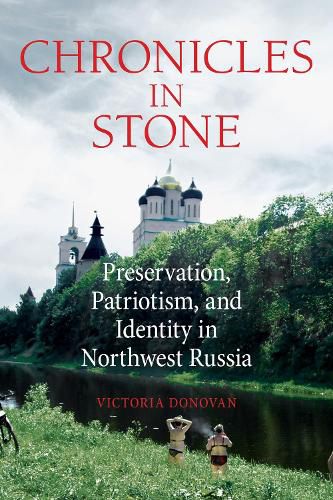Readings Newsletter
Become a Readings Member to make your shopping experience even easier.
Sign in or sign up for free!
You’re not far away from qualifying for FREE standard shipping within Australia
You’ve qualified for FREE standard shipping within Australia
The cart is loading…






Chronicles in Stone is a study of the powerful and pervasive myth of the Russian Northwest, its role in forming Soviet and Russian identities, and its impact on local communities. Combining detailed archival research, participant observation and oral history work, it explores the transformation of three northwestern Russian towns from provincial backwaters into the symbolic homelands of the Soviet and Russian nations.
The book’s central argument is that the Soviet state exploited the cultural heritage of the Northwest to craft patriotic narratives of the people’s genius, heroism and strength that could bind the nation together after 1945. Through sustained engagement with local voices, it reveals the ways these narratives were internalized, revised, and resisted by the communities living in the region.
Donovan provides an alternative lens through which to view the rise of Russian patriotic consciousness in the twentieth and twenty-first centuries, adding a valuable regional dimension to our knowledge of Russian nation building and identity politics.
$9.00 standard shipping within Australia
FREE standard shipping within Australia for orders over $100.00
Express & International shipping calculated at checkout
Chronicles in Stone is a study of the powerful and pervasive myth of the Russian Northwest, its role in forming Soviet and Russian identities, and its impact on local communities. Combining detailed archival research, participant observation and oral history work, it explores the transformation of three northwestern Russian towns from provincial backwaters into the symbolic homelands of the Soviet and Russian nations.
The book’s central argument is that the Soviet state exploited the cultural heritage of the Northwest to craft patriotic narratives of the people’s genius, heroism and strength that could bind the nation together after 1945. Through sustained engagement with local voices, it reveals the ways these narratives were internalized, revised, and resisted by the communities living in the region.
Donovan provides an alternative lens through which to view the rise of Russian patriotic consciousness in the twentieth and twenty-first centuries, adding a valuable regional dimension to our knowledge of Russian nation building and identity politics.